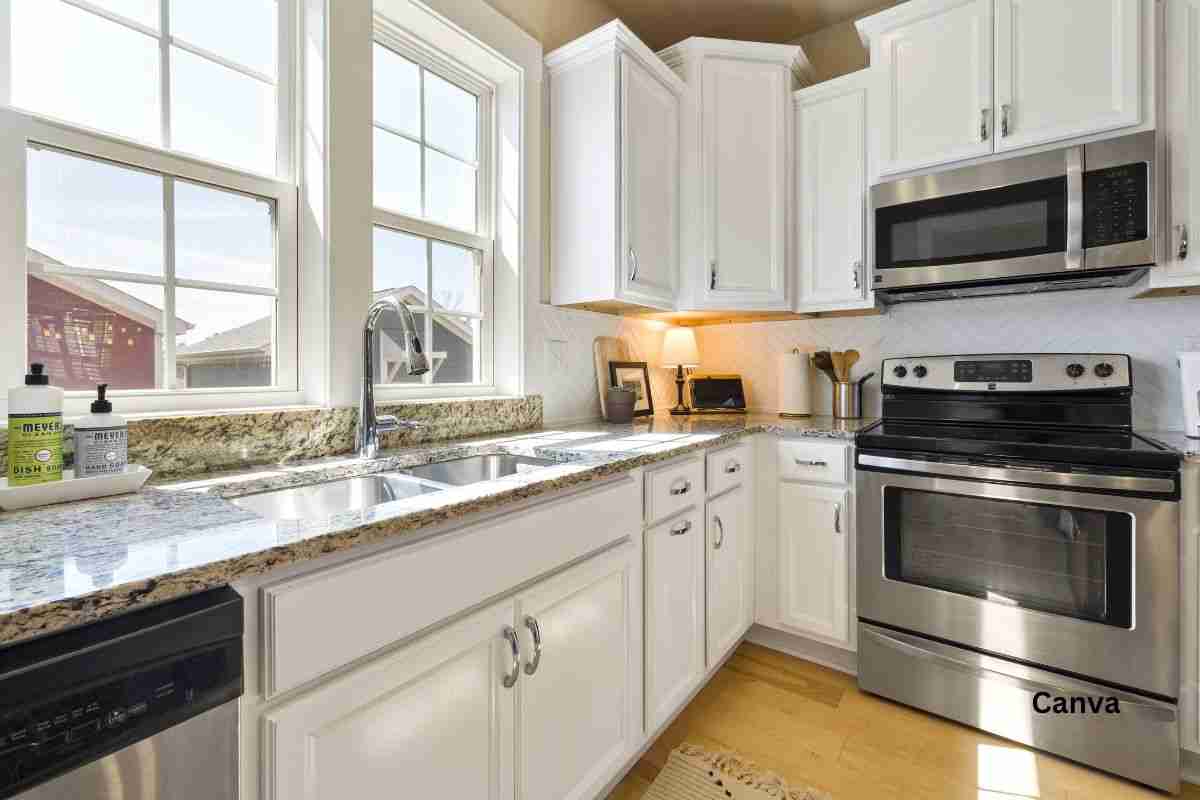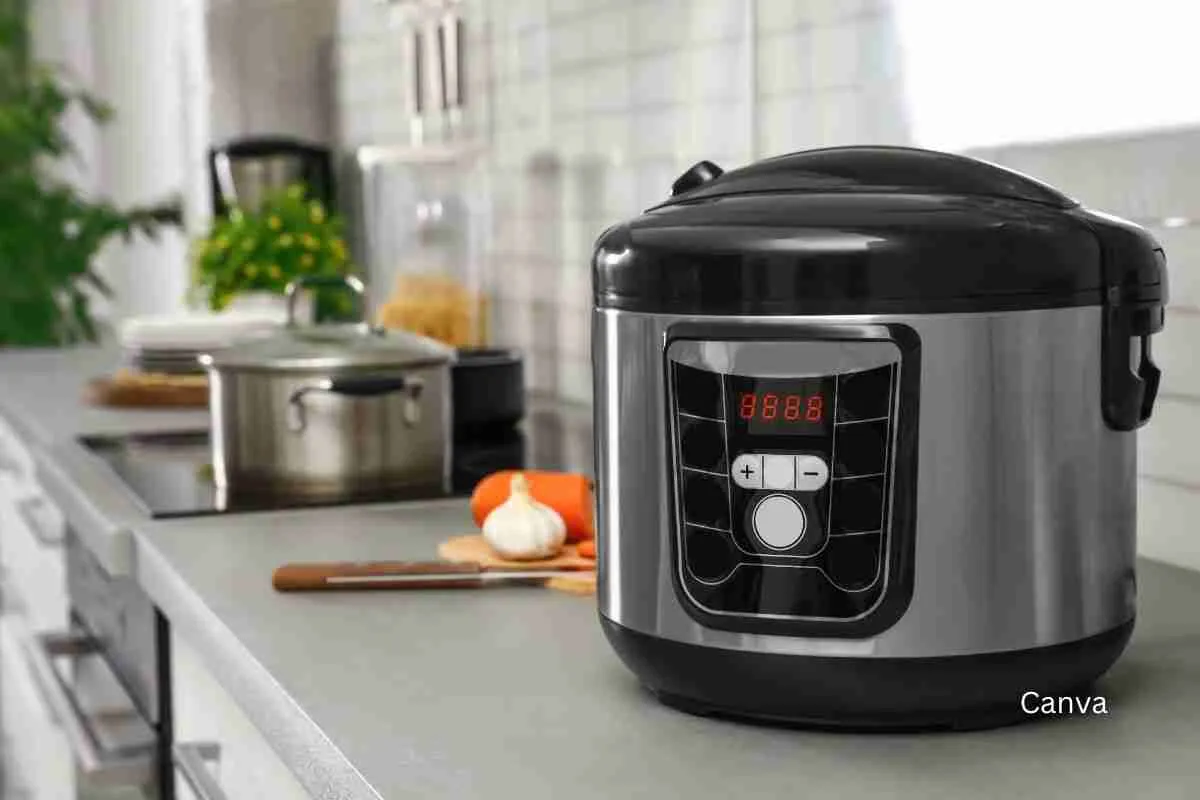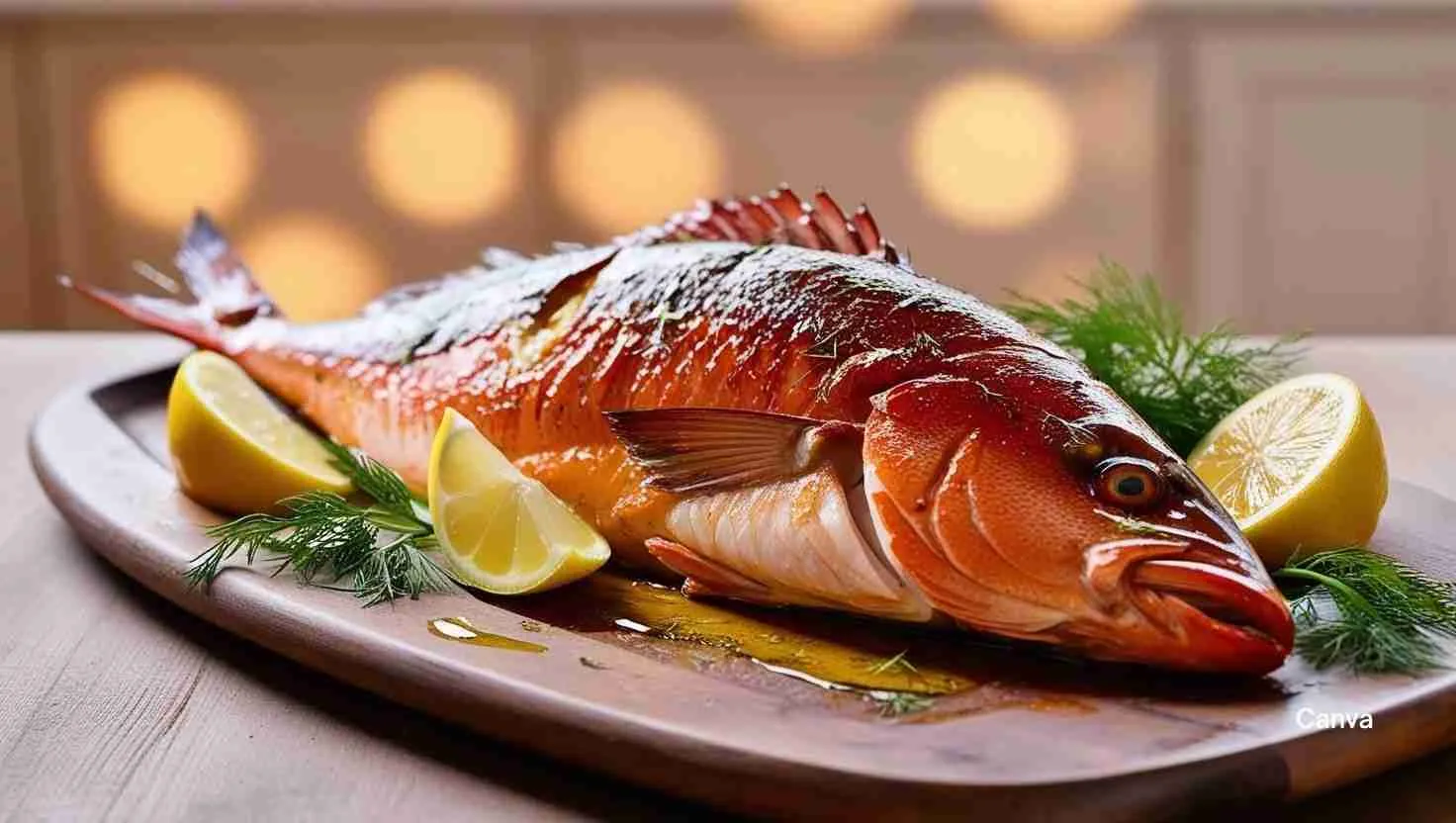8 Eco-Friendly Kitchen Hacks to Keep Your Kitchen Cool and Your Bills Low
When the summer heat is at its peak, keeping your kitchen cool can be a challenge. But don’t worry, we’ve got you covered with 10 energy-saving hacks that will not only help you beat the heat but also keep your bills low. Our tried-and-tested tips will make your kitchen a more comfortable space without sacrificing your budget or the environment. From simple changes like adjusting your cooking habits to investing in energy-efficient appliances, we’ll show you how to make your kitchen a cool oasis during the sweltering summer months.
You’ll learn the secrets of properly insulating your kitchen, utilizing natural ventilation, and cleverly arranging your appliances to maximize airflow. Plus, we’ll share innovative ways to reduce heat-producing activities and make the most of natural light. With these easy-to-implement suggestions, your kitchen will remain comfortable and energy-efficient, allowing you to enjoy delicious meals without breaking a sweat or the bank. Get ready to beat the summer heat and save on your energy bills with our energy-saving hacks for a cool kitchen this summer.

Understanding heat sources in the kitchen: The Key to Eco-Friendly Kitchen Hacks.
The kitchen is a battlefield against rising temperatures, especially in summer. But before you can conquer the heat, you need to understand your enemy: your stovetop and oven. Here’s a breakdown of common heat sources and how they work:
- Gas Stoves: A classic choice, gas stoves offer precise heat control with a visible flame. The heat transfer is instant, allowing you to adjust temperatures quickly. However, gas can be less energy-efficient than other options.
- Electric Stoves: Electric stoves use heating elements beneath the cooking surface to radiate heat. They’re generally more energy-efficient than gas but take longer to heat up and cool down, requiring a bit more planning.
- Induction Cooktops: The newest player on the block, induction cooktops, uses electromagnetic fields to directly heat the cookware itself. They’re incredibly efficient, heat up instantly, and offer excellent temperature control. However, they require cookware made with specific metals to function.
Heat Transfer Methods:
Understanding how heat transfers from your stovetop or oven to your food is crucial for efficient cooking. Here are the three main methods and sustainable alternatives to microwaves:
- Conduction: This is the transfer of heat through direct contact. When you place a pan on a hot burner, heat is conducted from the burner to the pan and then to your food.
- Convection: This involves the movement of hot air or liquid. In a convection oven, a fan circulates hot air, ensuring even cooking.
- Radiation: Heat travels in invisible waves, similar to sunlight. Broilers use radiant heat to cook food from above, creating a crispy exterior.
Choosing the Right Tool for Eco-friendly Cooking:
By understanding heat sources and transfer methods, you can make informed decisions. Need to boil water quickly? A gas stove with good conduction is ideal. For even baking, a convection oven is your best bet. Matching the cooking method to the heat source allows for efficient use of energy and perfect results.
By arming yourself with this knowledge, you can take control of your kitchen environment and become a master of energy-saving cooking!
Proper Insulation and Ventilation for a Cooler Kitchen
Conquering the summer heat in the kitchen isn’t just about choosing the right heat source. Proper insulation and ventilation are equally important for creating a comfortable and energy-efficient cooking environment.
Insulation: Keeping the Heat Where it Belongs to lower kitchen energy bill.
Think of insulation as a shield protecting your kitchen from unwanted heat gain. Here’s what you need to know about energy saving:
- Wall and Ceiling Insulation: Ensure your kitchen walls and ceiling are adequately insulated. Proper insulation prevents heat from radiating into your kitchen from the outside, especially during hot summer days.
- Appliance Insulation: Some appliances, like ovens and ranges, can generate significant heat. Look for models with good built-in insulation to minimize heat radiating into the kitchen.
- Vent Hood Duct Insulation: Insulating the exhaust duct of your range hood prevents hot cooking air from heating up your attic or crawlspace.
Ventilation: Letting the Heat Out for a Cool Kitchen in Summer
An efficient ventilation system is key to removing heat, moisture, and cooking odors from your kitchen. Here’s how it works:
- Range Hood: This is your first line of defense. A properly vented range hood captures heat, grease, and steam from cooking and vents it outside. Choose a hood with sufficient power for your cooktop size.
- Exhaust Fans: Consider installing additional exhaust fans near your stovetop or cooktop to further enhance ventilation, especially in kitchens with limited natural airflow.
- Natural Ventilation: Don’t underestimate the power of opening windows and doors to create cross-ventilation whenever possible. This allows hot air and moisture to escape naturally.
The Benefits of a Well-Insulated and Ventilated Kitchen:
- Improved Comfort: A cooler kitchen means a more pleasant cooking experience, especially during hot weather.
- Reduced Energy Use: By preventing heat gain and removing hot air efficiently, you’ll rely less on air conditioning, lowering your energy bills.
- Better Air Quality: Proper ventilation removes smoke, grease particles, and cooking odors, leading to a healthier and more enjoyable kitchen environment.
By investing in proper insulation and ventilation, you can create a more comfortable and energy-efficient kitchen that’s a pleasure to cook in all year round.
Power Up with Efficiency: Appliances and Lighting that Save Energy and Money
Modern appliances and lighting solutions can significantly reduce your kitchen’s energy consumption. Here’s how to make smart choices for a sustainable and cost-effective kitchen:
Appliance Efficiency:
- Look for the Energy Star Label: When replacing appliances, choose models with the Energy Star label. These appliances meet strict energy-efficiency standards, significantly reducing your energy use and electricity bills.
- Consider Capacity: Right-size your appliances. A large oven or refrigerator might be tempting, but if it doesn’t match your needs, it will waste energy.
- Induction Cooktops Reign Supreme: If you’re looking to upgrade your cooktop, consider induction. These incredibly efficient cooktops use electromagnetic fields to directly heat cookware, minimizing wasted energy.
Lighting Up Savings:
- LED Lights are the Champions: Replace your old incandescent bulbs with LED lighting. LEDs are much more energy-efficient and last significantly longer, saving you money on electricity and bulb replacements.
- Match the Light to the Task: Use task lighting for specific areas like the sink or cooktop. Pendant lights over a kitchen island can provide focused lighting while adding a decorative touch.
- Daylight Takes Center Stage: Take advantage of natural light during the day. Open blinds and curtains whenever possible to brighten your kitchen and reduce reliance on artificial lighting.
Smart Features for a Smarter Kitchen:
- Smart Appliances: Some appliances come with smart features that allow you to monitor and control energy use remotely. You can pre-heat your oven on your way home or shut it off accidentally left on.
- Smart Power Strips: These power strips can automatically cut power to electronics on standby mode, eliminating energy vampires that drain energy even when not in use.
By investing in the best energy-saving appliances for the kitchen and lighting, you’ll see a positive impact on your wallet and the environment. Every bit counts towards a more sustainable kitchen!
Smart cooking techniques to reduce heat
Even with the best appliances and ventilation, sometimes you just want to keep the overall kitchen temperature down. Here’s where smart cooking techniques come into play. These clever methods can help you achieve delicious meals without turning your kitchen into a furnace:
- Embrace Batch Cooking: Plan ahead and cook larger batches on cooler days. Portion leftovers for quick and easy meals throughout the week, minimizing the need for frequent stovetop or oven use.
- The Power of the Pressure Cooker: A pressure cooker is a lifesaver for reducing cooking times. By trapping steam and pressure, it cooks food significantly faster than conventional methods, keeping your kitchen cooler.
- Master the Art of One-Pot Meals: Simplify your cooking process by creating one-pot meals. Combine ingredients like protein, vegetables, and grains in a single pot or Dutch oven for a complete and flavorful meal with minimal cleanup and heat generation.
- Befriend the Slow Cooker: Slow cookers are perfect for hands-off cooking. Throw in your ingredients in the morning and come home to a delicious and energy-efficient dinner. They’re ideal for stews, soups, and braises, keeping your kitchen cool while the slow and steady heat works its magic.
- Let the Residual Heat Do the Work: Once you’ve turned off the stovetop, take advantage of the residual heat. Use a pan with a thick bottom that retains heat well to finish cooking food or simmer sauces.
- Embrace No-Cook Options: During peak summer heat, consider refreshing no-cook meals. Salads, gazpacho, and chilled soups offer delicious and healthy options that require no stove or oven time.
- Grill It Up: Take advantage of outdoor cooking whenever possible. Fire up the grill for burgers, vegetables, or even pizzas. This keeps the heat out of the kitchen and adds a smoky flavor to your food.
- The Magic of Microwaving (Strategically): While not the most energy-efficient option, microwaves can be strategic allies in reducing overall heat. Use them to quickly pre-cook vegetables or defrost frozen ingredients before adding them to your main cooking method.
By incorporating these smart cooking techniques into your repertoire, you can create delicious meals while keeping your kitchen cool and comfortable. Remember, a little planning and creativity go a long way in mastering the art of energy-saving cooking.

Utilizing natural light and shading for Energy-Saving
Natural light not only brightens your kitchen but also boosts your mood and energy levels. It can even play a role in reducing your reliance on artificial lighting and keeping the space cooler. Here’s how to utilize natural light and shading to create a naturally balanced and energy-efficient kitchen:
Embrace the Light:
- Window Wonderland: Maximize natural light by keeping windows clear and free from obstructions like curtains or blinds during the day. Consider larger windows or even skylights if your kitchen layout allows.
- Light and Bright: Choose light-colored finishes for walls, cabinets, and countertops. Light colors reflect natural light, making your kitchen feel more spacious and airy. Opt for glossy or reflective finishes for an extra light-boosting effect.
- Open Concept Magic (if applicable): If your kitchen opens up to a brighter room, consider removing a wall (or installing a glass wall) to allow natural light to flow freely. This can brighten your kitchen and create a more spacious feel.
Shading Strategies:
- Strategic Shading: While natural light is desirable, uncontrolled sunlight can generate unwanted heat gain during summer. Strategically placed window treatments like awnings, overhangs, or exterior sun shades can help block harsh afternoon sun, keeping your kitchen cooler.
- Light Filtering Magic: Opt for light-filtering shades or blinds that allow natural light to enter while diffusing harsh sunlight. This creates a softer, more comfortable atmosphere and reduces heat gain.
- Plant Power: Strategically placed trees or shrubs outside your kitchen windows can provide natural shade during the summer months. In winter, they lose their leaves, allowing more sunlight to penetrate.
Finding the Balance:
By combining these strategies, you can create a kitchen bathed in natural light while maintaining comfortable temperatures. Natural light not only enhances the aesthetics of your kitchen but also contributes to a more sustainable and energy-efficient space. So, let the sunshine in, but manage it wisely!
Effective use of kitchen fans and exhaust systems
Kitchen fans and exhaust systems are the workhorses of a cool and comfortable kitchen. By understanding how to use them effectively, you can significantly reduce heat, moisture, and cooking odors, making your kitchen a more enjoyable space to cook in.
The Mighty Exhaust Hood:
- Your First Line of Defense: A properly vented exhaust hood is essential for capturing heat, grease, and steam rising from your cooktop or range. Turn it on before you start cooking and let it run for a few minutes afterward to clear lingering fumes.
- Size Matters: Choose an exhaust hood that’s the right size for your cooktop. A hood that’s too small won’t be effective in capturing all the cooking exhaust.
- Vent it Outside: Ensure your exhaust hood is vented outside your house, ideally through the roof. Venting it back into the kitchen recirculates hot air and defeats the purpose.
Exhaust Fan Strategies:
- Beyond the Hood: Consider installing additional exhaust fans near your cooktop or stovetop, especially in kitchens with limited natural airflow. These fans can further enhance ventilation and remove lingering odors.
- Intermittent or Continuous? Some exhaust fans are designed for intermittent use during cooking bursts. Others are continuous fans meant to run for longer periods to maintain good air quality. Choose the right type of fan for your needs.
- Cleaning is Key: Regularly clean the exhaust fan filters to maintain optimal performance. Grease-caked filters restrict airflow and reduce the fan’s effectiveness.
Silent But Powerful Options:
- Modern fans offer whisper-quiet operation Gone are the days of noisy kitchen fans. Many modern fans are designed to be powerful yet quiet, allowing you to enjoy good ventilation without intrusive noise.
Working Together for Success:
By using your exhaust hood and any additional exhaust fans strategically, you can create a more effective ventilation system. Turn them on before, during, and after cooking to effectively remove heat, moisture, and odors.
Remember, a well-maintained and properly used ventilation system is key to a cool, comfortable, and healthy kitchen environment. So, turn on those fans and breathe easy!
Energy-saving tips for refrigeration and freezing
Your refrigerator and freezer are essential kitchen appliances, but they can also be major energy consumers. Luckily, there are several simple steps you can take to keep your food cold while keeping your energy bills low.
- Temperature Matters: A slight adjustment can make a big difference. Most refrigerators work best between 35-38 degrees Fahrenheit (2-4 degrees Celsius) and freezers between 0-5 degrees Fahrenheit (-18 degrees Celsius). Every degree colder increases energy use, so resist the urge to crank it up too high.
- Location, Location, Location: Where you place your fridge and freezer matters. Avoid placing them next to heat sources like ovens, stoves, or dishwashers. Ideally, position them in a cool, well-ventilated area with at least a few inches of clearance on all sides for proper air circulation.
- Seal the Deal: Worn-out or damaged door seals allow cold air to leak out and warm air to seep in, forcing your appliance to work harder. Inspect your door seals regularly for cracks or tears. A simple test is to place a dollar bill halfway into the seal. If you can easily pull it out, the seal needs replacing.
- Cleanliness is Key: Dust and grime buildup on the condenser coils (usually located at the back or bottom of your appliance) can hinder its ability to release heat. Clean the coils at least once a year with a vacuum cleaner or soft brush.
- Mind Your Fill: An empty fridge or freezer uses more energy to maintain a constant temperature. However, don’t overstuff them either, as air circulation is important for efficiency. Aim for a 75% fill rate for optimal performance.
- Strategic Stocking: Store hot foods in covered containers before placing them in the fridge or freezer. Letting them cool down first reduces the workload on your appliance.
- Defrost Regularly: Frost buildup in freezers acts as an insulator, reducing efficiency. Manual defrost freezers require defrosting when frost gets too thick (usually ¼ inch or more). Frost-free models don’t require manual defrosting, but they can still benefit from a wipe-down of any ice buildup occasionally.
- Consider an Upgrade: If your fridge or freezer is old and inefficient, replacing it with an Energy Star certified model can significantly reduce your energy consumption. Energy Star appliances meet strict energy-efficiency standards, saving you money on your electricity bills in the long run.
By following these simple tips, you can keep your refrigerator and freezer running smoothly and efficiently, saving energy and money while keeping your food fresh. Remember, small changes can make a big difference, both for your wallet and the environment!
Water-saving strategies in the kitchen
The kitchen is a hub for water use, from washing dishes and preparing food to making ice and rinsing fruits and vegetables. But with a few simple changes, you can significantly reduce your water footprint without compromising cleanliness or convenience. Here are some water-saving strategies to transform your kitchen into a water-wise zone:
Washing Dishes:
- Ditch the Running Rinse: Resist the urge to let the water flow freely while washing dishes. Fill one basin with soapy water for washing and another with clean water for rinsing. This targeted approach uses significantly less water than continuous rinsing.
- Embrace the Power of the Dishwasher (When Used Wisely): Dishwashers can actually be more water-efficient than handwashing, especially for large loads. But wait for a full load before running it, and avoid pre-rinsing dishes heavily. Let the dishwasher do the work!
- Scrape, Don’t Rinse: Before loading dishes into the dishwasher or washbasin, scrape off any leftover food particles. This minimizes the amount of rinsing needed for a sparkling clean.
Food Prep and Cooking:
- Think Twice About the Garbage Disposal: Garbage disposals use water to grind up food scraps, which then end up in the wastewater treatment system. Instead, compost food scraps or toss them in the trash.
- Fill ‘Er Up (Strategically): When washing fruits and vegetables, opt for a basin filled with clean water instead of running water. You can also wash multiple items at once to minimize water use.
- Defrost Wisely: Never defrost food under running water. This is not only wasteful but can also promote bacterial growth. Defrost food safely in the refrigerator or by using the microwave’s defrost setting.
- Pot Size Matters: Use pots and pans sized appropriately for the amount of food you’re cooking. Filling a large pot with a small amount of water is wasteful.
Beyond the Basics:
- Fix Leaks Promptly: Even a small leak can waste gallons of water over time. Check your faucets, pipes, and hoses for leaks regularly and repair them promptly.
- Upgrade Your Faucets: Consider installing low-flow faucets and aerators. These devices can significantly reduce the amount of water used without compromising water pressure.
- Reuse When Possible: Catch the cold water running from the faucet while it waits to warm up and use it to water plants or clean surfaces.
By incorporating these water-saving strategies into your daily kitchen routine, you can make a significant impact on your water consumption. Remember, every drop counts!

Conclusion: Conquer the Heat, Save Money, and Cook Green: Your Sustainable Kitchen Awaits!
Summer shouldn’t mean soaring energy bills and a sweltering kitchen. By making small changes to your appliances, cooking habits, and ventilation strategies, you can create a comfortable and eco-friendly kitchen you’ll love. From choosing energy-efficient appliances to embracing natural light and mastering smart cooking techniques, this guide empowers you to save money on your energy bills while minimizing your environmental impact.
Remember, every tweak and tip adds up. So, put these strategies into practice and enjoy a cool, sustainable, and cost-effective kitchen all year round!






